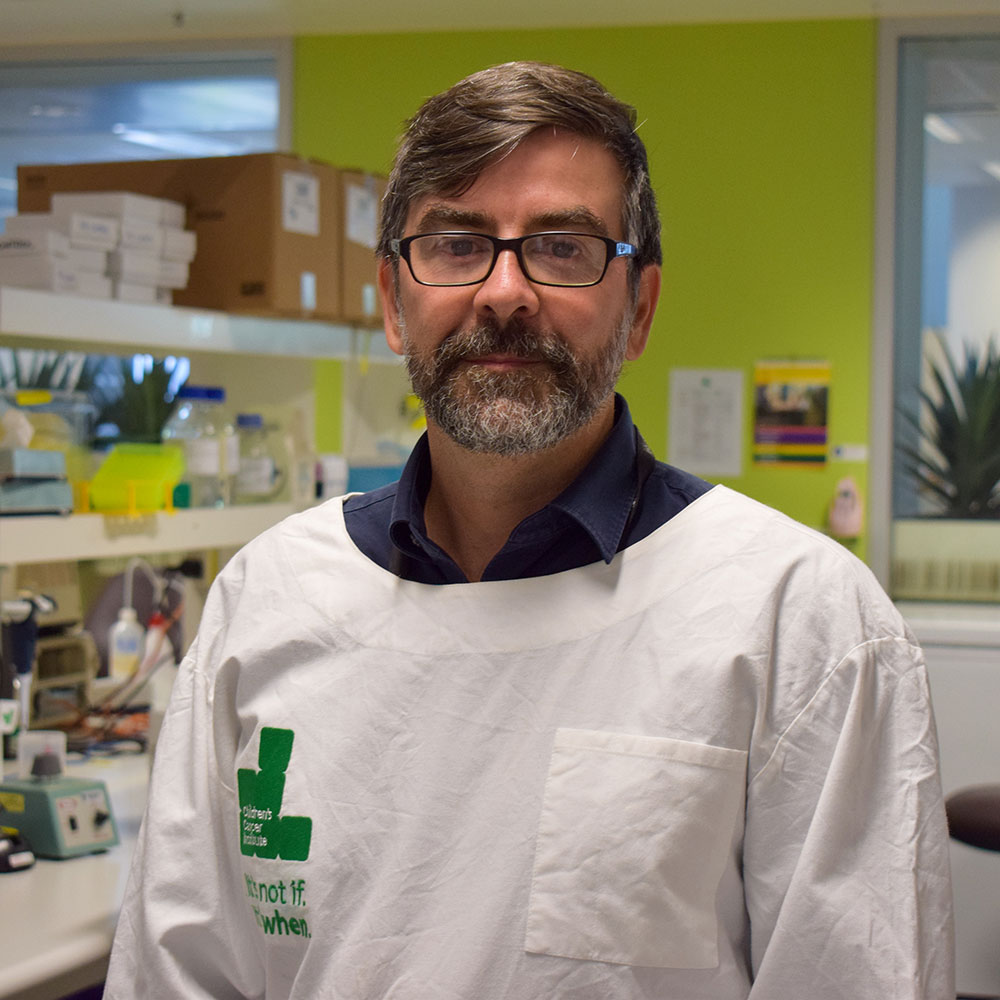The oncoproteins MYCN, MYC, and MYCL are overexpressed or deregulated in more than half of all human cancer. In neuroblastoma, the most common solid tumour in children under five years, MYCN is amplified or overexpressed in about one third of cases, conferring a poor prognosis. There is an urgent need for more effective therapies for children with high-risk MYCN-driven neuroblastoma.
One therapeutic strategy that has been shown to be of value in MYC-driven cancer is targeting histone deacetylases (HDACs), key regulators of gene expression. HDAC inhibitors (HDACi) are effective in MYCN-driven cancer because of a unique need for HDAC recruitment by the MYCN oncogenic signal. Several HDACi drugs have been approved for the treatment of cancer; however, these have shown limited effects as single agents due to induced treatment resistance.

This has led our research team to try to identify other anticancer agents that can be used in combination with HDACi therapy to enhance efficacy. We performed a cell-based, high-throughput drug screen of more than 10,000 small molecule compounds, finding a small molecule compound (SE486-11) which worked synergistically with the HDACi, suberanoyl hydroxamic acid (SAHA).
In our experiments, SE486-11 significantly enhanced the cytopathic effects of SAHA across a panel of neuroblastoma cell lines, and completely blocked tumour growth in MYCN transgenic mice and zebrafish. Investigating the mechanism behind this effect, we found that the SAHA+SE486-11 combination repressed MYCN protein levels indirectly through effects on the ubiquitin-specific protease, USP5. USP5 bound directly to the MYCN protein and increased its stability by protecting it from ubiquitin-mediated degradation. This effect could be reversed by direct binding of both drugs (SAHA+SE486-11) to USP5.

To our knowledge, we are the first to show that USP5 is an oncogenic cofactor of MYCN in promoting neuroblastoma tumourigenesis, and that it can be targeted by a combination HDACi therapy.
Ubiquitin-specific proteases (USPs) are emerging therapeutic targets in the treatment of cancer. Increased USP5 levels have been associated with tumorigenesis in a number of human cancers, including glioblastoma, melanoma and hepatocellular carcinoma. Added to this, USP28, USP36, and USP37 have been shown to stabilise and enhance c-MYC protein activity, while USP7 has been shown to deubiquitinate and stabilise MYCN in neuroblastoma.
Our own studies have now identified USP5 as a completely novel therapeutic target in neuroblastoma. We have synthesised several analogous of SE486-11 to use in combination with HDACi therapy to effectively target USP5, and have shown these compounds display excellent in vitro activity at low nanomolar range and promising in vivo activity. Our goal is to determine the efficacy of our novel combination, used alone as well as with existing chemotherapy and radiotherapy, and provide vital results and knowledge for clinical trials utilising inhibitors of HDAC and USP5 in MYCN-driven cancer.
This work was done by the Embryonal Cancer Therapy and Prevention group. It is now published online in the journal Oncogene, which you can read here.














